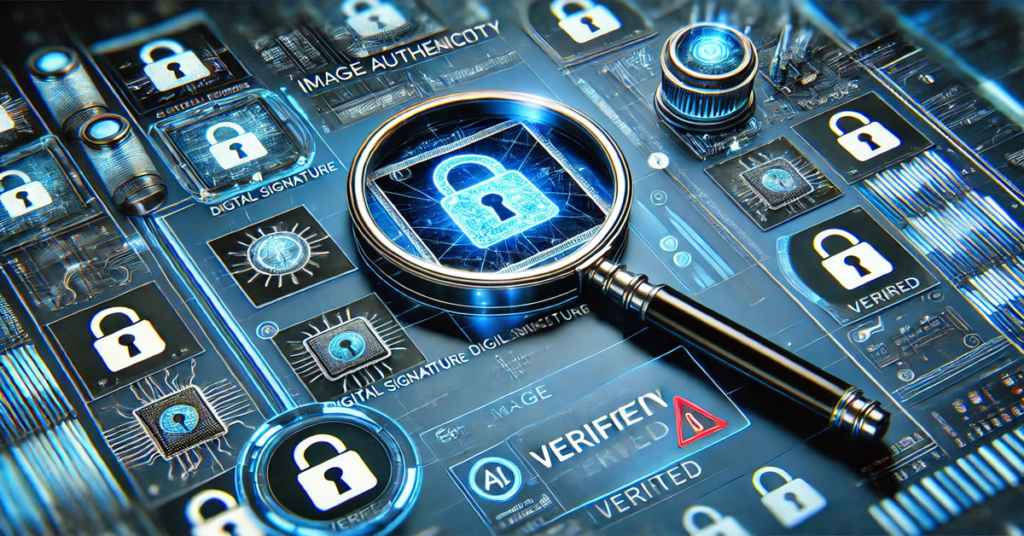Cloudflare Launches Game-Changing Image Verification: One-Click Defense Against AI Fakes
Remember that time you saw a photo of a celebrity doing something completely outrageous, only to find out later it was fake? We’ve all been there. With AI making it ridiculously easy to create fake images that look real, it’s getting harder than ever to know what to trust online. But here’s some good news: Cloudflare just came up with a brilliant solution that might change everything.
The Problem We’re All Facing
Let’s be real – the internet has become a bit of a mess when it comes to trusting what we see. One minute you’re looking at what seems to be a perfectly normal news photo, and the next thing you know, someone tells you it was created by AI in about 30 seconds. It’s enough to make anyone’s head spin.
Think about it: How many times have you seen a shocking image and thought, “Wait… is this actually real?” The truth is, we’re all becoming a bit paranoid about what we see online – and honestly, we probably should be.
- Cloudflare Launches Game-Changing Image Verification: One-Click Defense Against AI Fakes
- The Problem We’re All Facing
- Here Comes the Game-Changer
- What Makes This So Special?
- Real Talk: Why This Matters to You
- How It Actually Works (In Normal Human Terms)
- The Bigger Picture
- What This Means for the Future
- The Bottom Line
- What’s Next?
- Frequently Asked Questions: Cloudflare’s Image Verification System
- What exactly is Cloudflare’s Content Credentials feature?
- How does the image verification system actually work?
- Do I need special technical knowledge to use this feature?
- Can this system detect AI-generated images?
- What happens if someone tries to modify an image that has Content Credentials?
- Is this feature available to everyone who uses Cloudflare?
- How much does it cost to use this verification system?
- Can I verify images from other websites that use this system?
- What makes this different from other image verification systems?
- Will this completely solve the problem of fake images online?
- Can Content Credentials be removed from an image?
- Does this work with all image formats?
- How does this affect image loading speed on websites?
- Can I see the history of all changes made to an image?
- What should I do if I find an image with broken or suspicious Content Credentials?
Here Comes the Game-Changer
This is where Cloudflare’s new trick comes in, and trust me, it’s pretty cool. They’ve created something called ‘Content Credentials’ – think of it like a history book for every image you see online. But instead of being some complicated tech that nobody understands, it’s actually super simple to use.
What Makes This So Special?
Imagine if every photo came with its own diary that told you:
- Who actually took it
- Whether someone’s tweaked it
- If it’s been resized or changed
- Whether it came from a real camera or an AI
- Every step of its journey across the internet
The best part? You don’t need to be a tech genius to use it. It’s literally just one click to turn it on.
Real Talk: Why This Matters to You
Let’s break this down with some real-world examples that we can all relate to:
For Everyone Who’s Ever Been Fooled Online
You know that feeling when you share something amazing on social media, only to have your friend point out it’s fake? Yeah, this could help prevent those awkward moments.
For Creators Who Are Sick of Their Work Being Stolen
If you’re someone who creates original content, you know how frustrating it is when others take credit for your work. This system is like having a permanent signature on everything you create.
For Parents Worried About What Their Kids See
With this tool, you can quickly check if that scary news image your kid is asking about is actually real or just someone’s AI creation.
How It Actually Works (In Normal Human Terms)
Here’s the cool part – Cloudflare has made this super simple. If you’re using their image service, you literally just click one button labeled “Preserve Content Credentials.” That’s it. No complex settings, no tech degree required.
The Bigger Picture
Matthew Prince, who helped create Cloudflare, puts it perfectly: “The future of the Internet depends on trust and authenticity.” He’s not wrong. Think about it – we’re reaching a point where we can’t trust our own eyes anymore when it comes to online content. This tool is like having a BS detector for images.
What This Means for the Future
Let’s get excited about what this could mean:
- No more falling for fake celebrity photos
- Less chance of viral misinformation spreading
- Better protection for artists and photographers
- A way to actually trust breaking news images
- Less time spent wondering “Is this real?”
The Bottom Line
Look, we’re living in a world where seeing isn’t necessarily believing anymore. That’s kind of scary when you think about it. But tools like this give us hope that maybe, just maybe, we can find a way to make the internet trustworthy again.
Cloudflare’s new feature isn’t just another tech update – it’s a way to help us navigate this wild new world where AI can create incredibly convincing fakes. It’s about helping us trust what we see online again, one image at a time.
What’s Next?
This is just the beginning. As more companies and creators start using tools like this, we might actually be able to build an internet where we can trust what we see again. Wouldn’t that be something?
For now, though, we’ve got a pretty awesome start. It’s simple, it works, and most importantly, it helps us all figure out what’s real in a world where that’s getting harder and harder to do.
Remember when we used to say “pictures don’t lie”? Well, maybe with tools like this, we can start saying that again – and actually mean it.

Frequently Asked Questions: Cloudflare’s Image Verification System
What exactly is Cloudflare’s Content Credentials feature?
Content Credentials is a one-click solution that adds a digital “nutrition label” to images. This label contains verifiable information about an image’s origin, creator, and any modifications it has undergone. Think of it as a digital passport that travels with an image wherever it goes online, helping verify its authenticity.
How does the image verification system actually work?
The system uses cryptographic technology to create an unbreakable chain of information about an image. When you enable the feature, it automatically records every transformation an image undergoes (like resizing or editing) using public key cryptography. This information is embedded as metadata that stays with the image and can be verified using Adobe’s Content Authenticity Inspect tool.
Do I need special technical knowledge to use this feature?
Not at all! That’s one of the best things about this solution. If you’re using Cloudflare Images, you simply need to click the “Preserve Content Credentials” button once. The system handles all the technical aspects automatically after that.
Can this system detect AI-generated images?
Yes, Content Credentials can identify if an image was created using AI tools. When an image is generated by AI, this information becomes part of its permanent record. However, it’s important to note that this only works for new images processed through the system – it can’t retroactively detect AI-generated images that don’t have Content Credentials.
What happens if someone tries to modify an image that has Content Credentials?
Any modifications to an image with Content Credentials are automatically recorded in its digital history. If someone attempts to modify an image without proper authorization, the system will show that the chain of custody has been broken, alerting viewers that the image may have been tampered with.
Is this feature available to everyone who uses Cloudflare?
The feature is available to users of Cloudflare Images, which is Cloudflare’s image storage and optimization solution. You’ll need to be a Cloudflare customer with access to their Images service to use this feature.
How much does it cost to use this verification system?
The Content Credentials feature itself is included with Cloudflare Images at no additional cost. However, you’ll need to be a Cloudflare Images customer to access it. For specific pricing, it’s best to check Cloudflare’s current pricing structure on their website.
Can I verify images from other websites that use this system?
Yes, you can verify any image that has Content Credentials embedded, regardless of where you find it online. You can use Adobe’s Content Authenticity Inspect tool to check the credentials of any image that has them.
What makes this different from other image verification systems?
The key differentiator is its simplicity and integration with Cloudflare’s global network. While other systems might require complex implementation or multiple steps, this is a one-click solution that works automatically once enabled. It’s also built on open standards (C2PA) and supported by a large community of technology companies.
Will this completely solve the problem of fake images online?
While this is a powerful tool in the fight against misinformation, it’s not a complete solution on its own. It’s most effective when widely adopted and used in combination with other verification methods. However, it does provide a strong foundation for building trust in digital content.
Can Content Credentials be removed from an image?
While it’s technically possible to strip metadata from an image, doing so would break the chain of verification, making it obvious that the image has been tampered with. This helps maintain the integrity of verified images.
Does this work with all image formats?
The system works with most common image formats used on the web (JPEG, PNG, etc.). However, it’s best to check with Cloudflare’s documentation for a complete list of supported formats.
How does this affect image loading speed on websites?
The impact on loading speed is minimal. Cloudflare has optimized the system to add the verification data without significantly increasing file sizes or affecting performance.
Can I see the history of all changes made to an image?
Yes, if an image has Content Credentials, you can view its complete history, including who created it, when it was modified, what changes were made, and by whom. This creates a transparent record of the image’s journey from creation to current state.
What should I do if I find an image with broken or suspicious Content Credentials?
If you encounter an image with suspicious credentials, you can report it through the Content Authenticity Initiative’s reporting tools. This helps maintain the integrity of the system and helps identify potential misuse.




